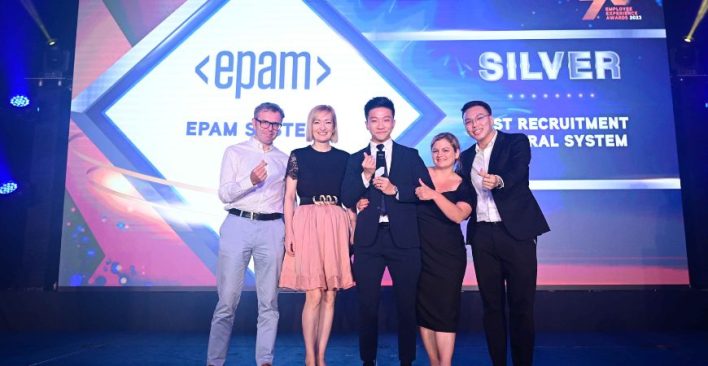What can your sourcing strategy learn from Elon Musk’s Mars mission?

We’re going to Mars. In around 15 years’ time, hundreds of people will be travelling to the planet every month on a mission to establish a new colony 54.6 million kilometres away from home.
Elon Musk, the mastermind behind the SpaceX Mars mission project, has persuaded talent that going to a potentially uninhabitable planet is an intriguing job opportunity.
How on Earth do you recruit talent for a Mars mission?
With the missions having his employees risking their lives, Elon Musk has managed to create an attractive set of values and employer brand for people to commit to him and his vision. After all, it’s one thing to convince someone to move to another country for a job, let alone have them wanting to leave the planet.
[bctt tweet=”Recruitment can take a leaf from Elon Musk’s Mars mission says @wittering.” username=”ATCevent”]
Musk has revealed that his first question to candidates is, ‘Are you prepared to die?’ And if they are OK with that prospect, they’re an ideal fit for the job ahead.
There is no scarier or more intense question a potential hire could be asked in the first stages of a recruitment process, but if Musk can market his incredibly risky opportunities in an attractive light, you can build an attractive employer brand too.
To do this, you need to think of your sourcing strategy in terms of five key areas:
 Exploration – Who do you need in your workforce, and where are they now?
Exploration – Who do you need in your workforce, and where are they now?
In Musk’s case, he knows that to launch a rocket to Mars and ensure the planet is as safe as it can be, he needs the very best talent from the science, engineering and IT industries. Candidates will be required to have PhDs and very specific skillsets.
This is what you should be thinking about when you begin sourcing talent. It wouldn’t hurt to think of the gap in your recruitment as a colony that needs to be built from scratch, where a single missing skill could cause the whole community to crumble.
Next, you have to be able to identify where in the world the talent you want is based. Specially-tailored Boolean searches, talent mapping, heat maps etc. can help you begin the exploration and identification process.
 Interest – How do you let talent know they want to work for you?
Interest – How do you let talent know they want to work for you?
Musk has created an incredibly compelling story to accompany his Mars mission, telling people this is a unique opportunity to bring life to a barren planet, to create their own community and culture and essentially be the forefathers of a whole new world. He’s been able to do this in such a captivating manner because he’s the first to be so authoritative and ambitious on the matter, meaning he stands out from the crowd in his own little world.
And this is exactly how you need to position your organisation when it comes to sourcing talent. You need a unique, compelling, attention-grabbing story that taps into people’s emotions and makes even passive candidates stop, listen and begin to question what they want from their life and career. Read more about creating a strong employer brand story here.
 Making contact – How do you contact prospective candidates to tell them your compelling story?
Making contact – How do you contact prospective candidates to tell them your compelling story?
 Once you have a compelling angle for your brand story, you need to get it out there. Musk has the power of the media at his disposal, with the world eager to listen to exactly what the SpaceX missions are going to involve, but it’s unlikely that your organisation will have this same reach.
Once you have a compelling angle for your brand story, you need to get it out there. Musk has the power of the media at his disposal, with the world eager to listen to exactly what the SpaceX missions are going to involve, but it’s unlikely that your organisation will have this same reach.
However, you do have Facebook, Twitter, Instagram, Snapchat, email and both online and offline jobs boards at your fingertips, enabling you to create a captivating brand story across a variety of mediums. Just remember to bear in mind the type of talent you’re looking for and where they are likely to be based when putting your story out there to boost your chances of generating the best leads.
 Inspection – How do you make sure the talent is the right fit for the role?
Inspection – How do you make sure the talent is the right fit for the role?
While you may not need to take quite as intense of an approach as Musk asking candidates, ‘Are you prepared to die?’ to assess their suitability, you do need to make sure that prospective talent fits with your brand’s cultural values. These should play an integral role in the interview stage of the recruitment process, forming the basis of questions to enable you to assess how each candidate would fit in. Here are some examples of what you could ask:
- What’s important to you both professionally and personally?
- What are you passionate about?
- What is it that gets you out of bed in the morning?
The answers to these will help you to build a detailed picture of each candidate’s cultural fit. You might not need them to risk their life for the task at hand, but you do need to be certain that they are passionate about your brand values and will give the job their absolute all.
 Onboarding – How do you get them on the rocket?
Onboarding – How do you get them on the rocket?
The final stage of Musk’s SpaceX recruitment efforts is to get candidates into the rocket and on their way to Mars. For your organisation, it’s fully onboarding the hire and helping them blast off on their journey to creating success for themselves and your business.
SpaceX hires need to be so immersed in the project’s cultural values once they are onboarded that they will eventually risk their lives for the mission, and you need to take a similar approach when immersing talent into your company.
[bctt tweet=”5 key areas to consider when thinking of your sourcing strategy according to @wittering.” username=”ATCevent”]
How immersive is your current sourcing strategy? Do you feel that you manage to make candidates commit to giving their all through your brand’s storytelling and values? Connect with me on LinkedIn to let me know or contact the AGS team to find out more about making your sourcing strategy world-class – actually, let’s take a leaf out of Musk’s book and make that universe-class.
Images: Shutterstock
This article first appeared on LinkedIn on October 19th, 2016.
If finding and hiring top talent is important to you, check out our upcoming Sourcing Social Talent conference:

Related articles
Leave a Reply
Sign up to our newsletter
Get a weekly digest on the latest in Talent Acquisition.
Deliver this goodness to my inbox!


